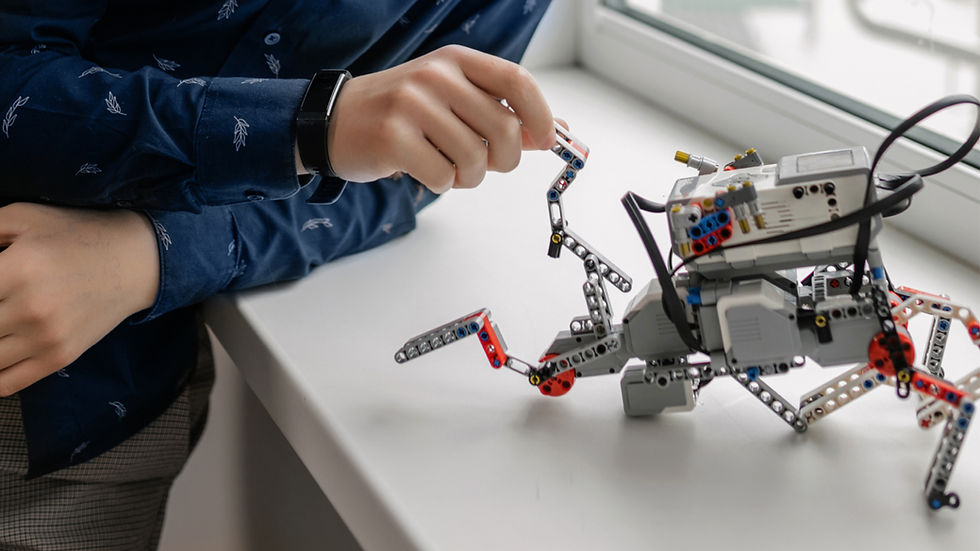The Role of Robotics in Developing Critical Thinking Skills
- Pranil Kanderi
- Nov 24, 2023
- 2 min read
Updated: Jan 25, 2024
Robotics has become an increasingly popular educational tool, especially in the field of STEM education. It offers students a unique opportunity to develop critical thinking skills while having fun and engaging in hands-on learning. Overdrive Robotics, a non-profit organization based in Arizona, recognizes the importance of introducing robotics to kids in elementary and middle school as part of their STEM education. So, what exactly is critical thinking, and why is it important? Critical thinking is the ability to analyze and evaluate information, solve problems, and make informed decisions. It involves using logic, reasoning, and creativity to explore different perspectives and come up with innovative solutions. These skills are essential for success in school, work, and everyday life. Robotics provides an ideal platform for developing critical thinking skills. When students work on robotics projects, they are faced with challenges that require them to think critically and problem-solve. They need to analyze the problem, break it down into smaller components, and come up with a plan to solve it. This process encourages students to think outside the box, explore different possibilities, and experiment with different solutions. Collaboration is another important aspect of robotics education. In the image, we can see the students working together, collaborating and sharing ideas. Collaboration fosters teamwork, communication, and the ability to work effectively with others. It also exposes students to different perspectives and encourages them to consider alternative solutions. These skills are not only valuable in robotics but also in any team-based project or professional setting. Robotics also promotes creativity and innovation. As students work on their projects, they have the freedom to design and build their robots according to their own ideas and imagination. This encourages them to think creatively, experiment with different designs, and come up with innovative solutions. In the process, they learn that there is often more than one way to solve a problem and that failure is a part of the learning process. To make the most out of robotics education and develop critical thinking skills, here are a few tips: 1. Encourage exploration: Provide students with opportunities to explore different aspects of robotics, such as programming, mechanical design, and sensor integration. This allows them to discover their interests and strengths. 2. Foster problem-solving: Present students with open-ended challenges that require them to think critically and come up with creative solutions. Encourage them to brainstorm ideas, test different approaches, and learn from their mistakes. 3. Promote collaboration: Create a supportive and inclusive environment where students can collaborate and learn from each other. Encourage them to share ideas, ask questions, and work together to solve problems. 4. Embrace failure: Teach students that failure is a natural part of the learning process. Encourage them to learn from their mistakes, iterate on their designs, and persevere through challenges. 5. Celebrate success: Recognize and celebrate students' achievements and successes. This boosts their confidence and motivates them to continue exploring and learning. In conclusion, robotics education plays a crucial role in developing critical thinking skills in students. It provides them with opportunities to think critically, problem-solve, collaborate, and be creative. By introducing robotics to kids in elementary and middle school, organizations like Overdrive Robotics are paving the way for a future generation of critical thinkers and innovators.



